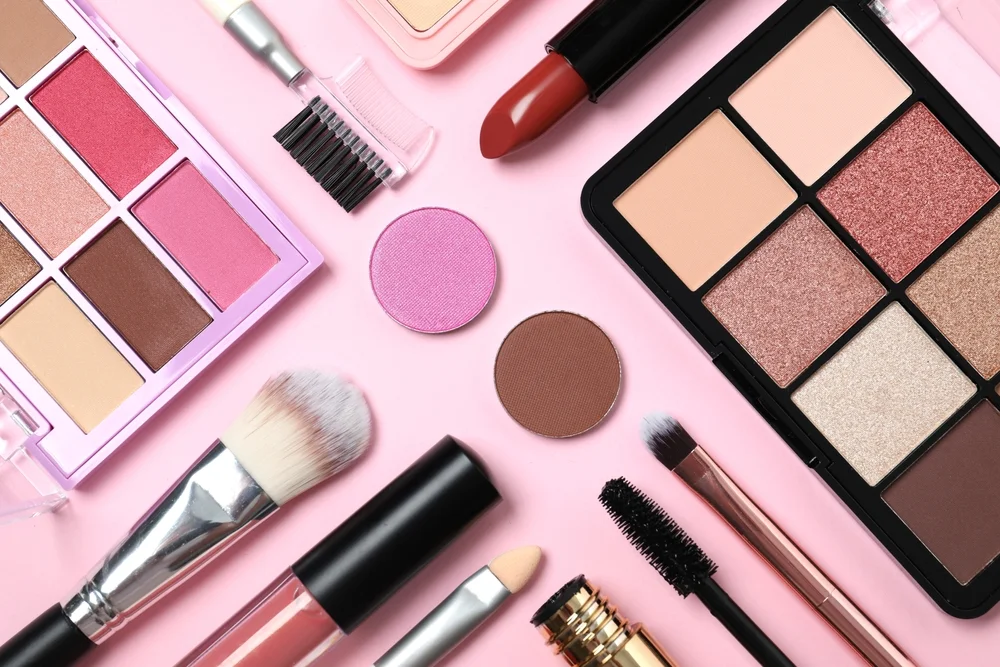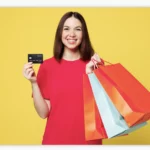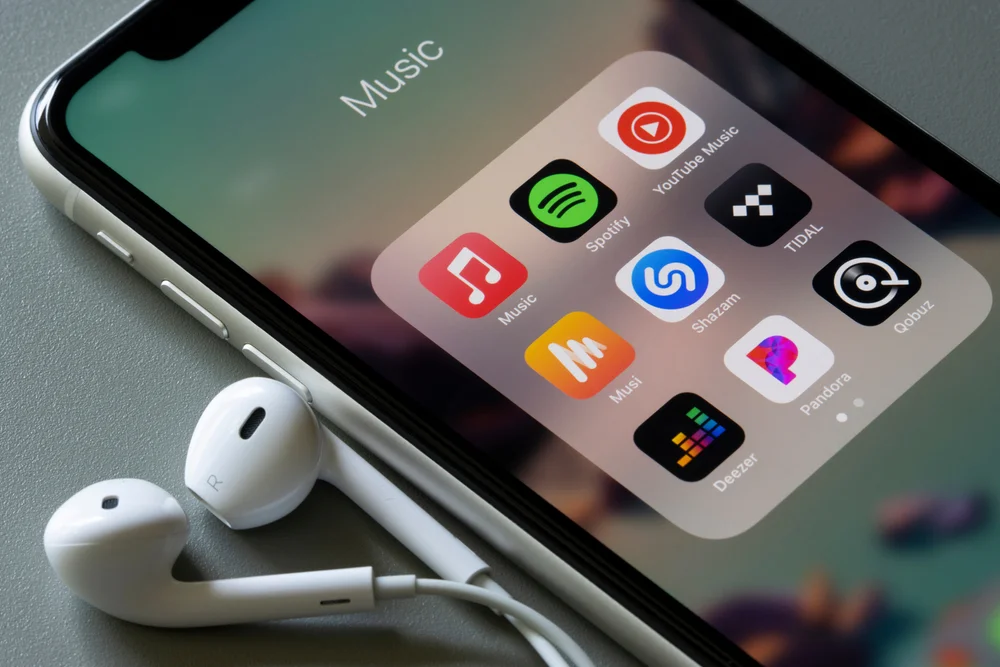With estimated global sales of $579 billion in 2023, the cosmetics marketing sector continues to attract, innovate and reinvent itself. In France alone, it is worth more than €17 billion, making France one of the world leaders in beauty.
Behind these impressive figures lies a market undergoing profund change, with new players and increasingly engaged consumers. In this article, we will therefore examine new challenges facing cosmetics marketing.
How to boost brand visibility ? What formats can you use to engage consumers in the long term? And above all, how can a tool like gamification become a powerful lever to stimulate sales, build loyalty and enrich the customer experience? Here is our analysis, along with some concrete examples to inspire your future campaigns.
Developing your cosmetics brand: 3 pillars to stand out from the crowd
Nowadays, consumers want more than just a good product; they want a complete experience: a recognisable brand universe, embodied valued and a constant presence on their preferred channels. Here are three key levers to activate in order to lat the foundations for a powerful and memorable cosmetic brand.
1. Focus on authentic and embodied storytelling
Storytelling is the secret weapon for brands that want to create emotion and build audience loyalty. At a time when consumers are looking for meaning, it allows brands to contextualise their offering, talk about their commitments or formulation choices, while making the brand more human.
This translate into:
- A clear brand mission (skin health, responsible cosmetics)
- Verifiable commitments (local production, natural ingredients, certifications, etc.),
- And a lively tone (sometimes taking on the voice of the founder).
Example : Typology
Founded by Ning Li (formerly of Made.com), the brand focuses on radical transparency in tis compositions and accessible education about its formulations. Each product displays the percentage of ingredients of natural origin, and the information is scientifically sourced. This minimalist, honest approach reassures and appeals to a demanding target market.
2. Create a strong and consistant identity on social media
Brands that want to stand out on social media must therefore:
- Define a unique graphic charter and tone of voice.
- Create native content for each platform
- Engage users by promoting UGC (User Generated Content)
Example: Merci Handy
The brand has successfully established a fun, uninhibited and colourful tone on social media, particularly on TikTok. By subverting hygiene conventions and embracing self-depreciating humour, it has forged a strong connection with a young, connected audience.
3. Partner with influencers to gain visibility and credibility
To get started in influence marketing, it is important to:
- Identify profiles aligned with brand values
- Co-create authentic content: beauty routines, unboxing challenges
- Think long term with editorial collaborations or limited editions.
Example : Fenty Beauty
From the outset, Rihanna’s brand has focused on inclusivity as a central pillar of its marketing strategy. She has surronded herself with influencers of all backgrounds and skin tones to convey her message.
Boosting sales: digital marketing strategies tailored to the cosmetcs industry
In the beauty industry, digital marketing is a decisive lever for capturing attention, generating traffic and converting interest into purchases. Here are three high-potential digital approaches that have already been adopted by many cosmetics brands.
1. Co-create products with your community through gamification
Involving consumers in the creative process encourages their engagement and strengthens their sense of belonging to the brand. This co-creating can take the form of interactive votes, personalized quizzes or participatory competitions. The result: a product that is perceived as more legitimate and a launch that goes viral naturally.
Inspiring examples:
- Nidé.co builds its entire offering on this principle: each launch is co-created with its community via an interactive platform, to offer useful and sought-after solutions.
- Avril, an organic cosmetic brand, used gamification to gather preferences on products currently in development. The result: more targeted launches and increased engagement even before the products hit the shelves.
2. Co-branding & marketing games to stimulate cross-selling
Co-branding allows two complementary brands to cross-pollinate their audiences and benefit mutually from their brand awareness. Combined with a gamified marketing game, this becomes an excellent lever for generating traffic, stimulating sales and collecting qualified data.
Example : Sephora x Nuxe
To boost sales of Nuxe products on its marketplace, Sephora launched a digital game on its app and website. An interstitial ad presented the product features, increasing their visibility. The 100% winning mechanic encouraged purchases while collecting data via an integrated form. This game enabled Sephora to attract qualified traffic, boost Nuxe sales, and feed its CRM with new leads.
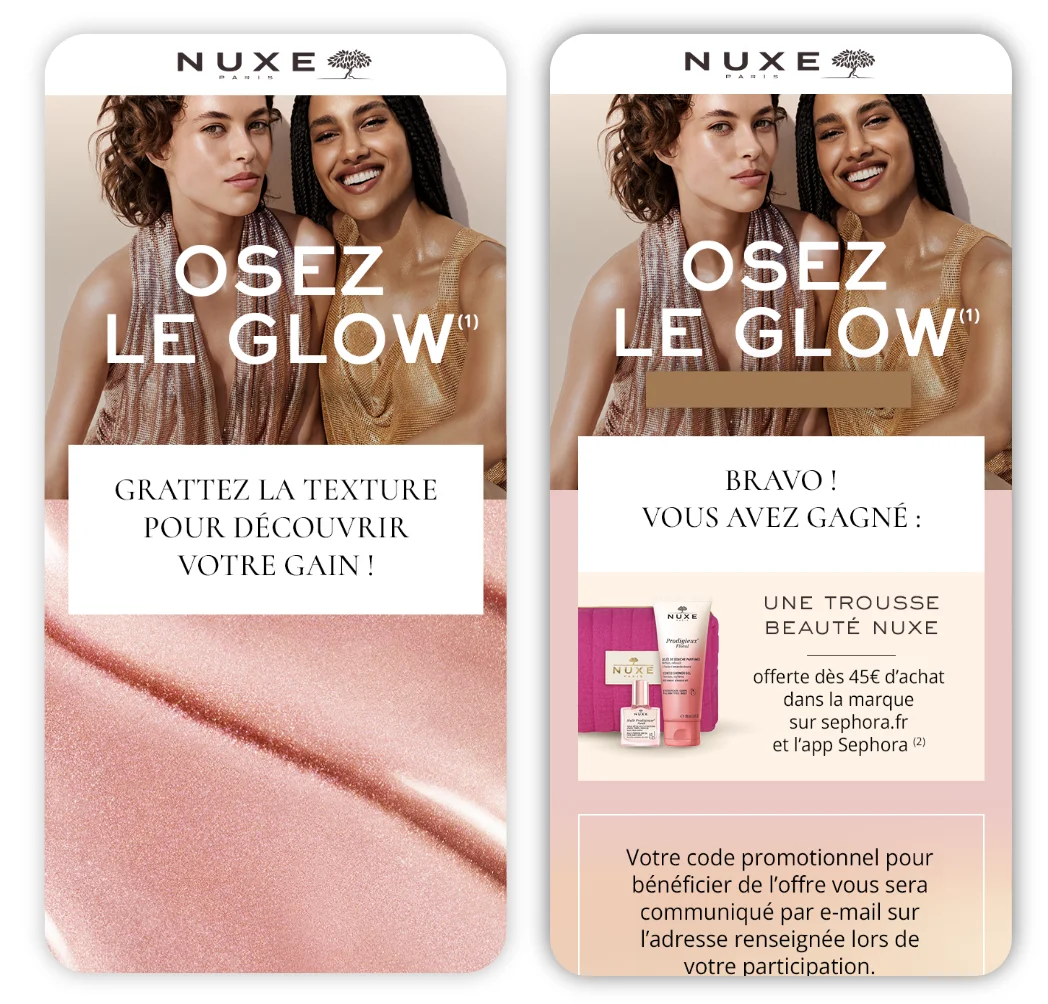
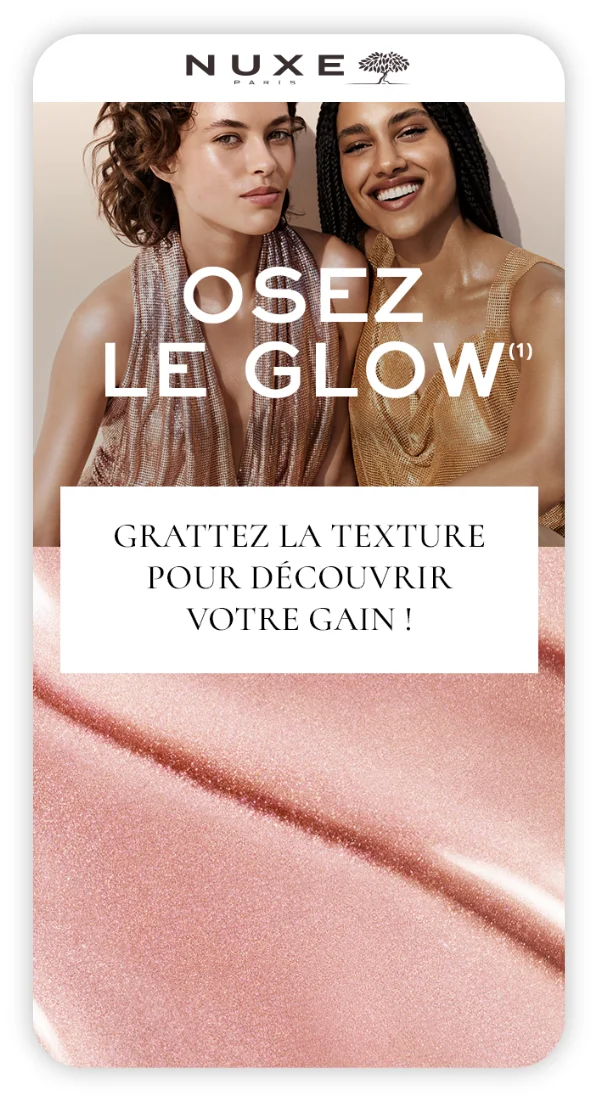
3. Personalise the shopping experience with fun virtual trials
Personalisation has become a key purchasing criterion in cosmetics. Offering a tailor-made, gamified shopping experience allows you to meet the specific needs of consumers while boosting conversion rates. And when this personalisation takes the form of a game (via a survey or personality test, for example), engagement skyrockets.
Exemple : Sephora – Skincare Campaign
Sephora recently launched a fin activation around skincare diagnosis. Participants were guides through an interactive journey to define their skin type and ideal routine. At then end of the journey, a personalised promo code enhanced the shopping experience and boosted conversion. This campaign generated traffic to the website, increased skincar sales, and recruited new opt-ins leads for targeted marketing actions.
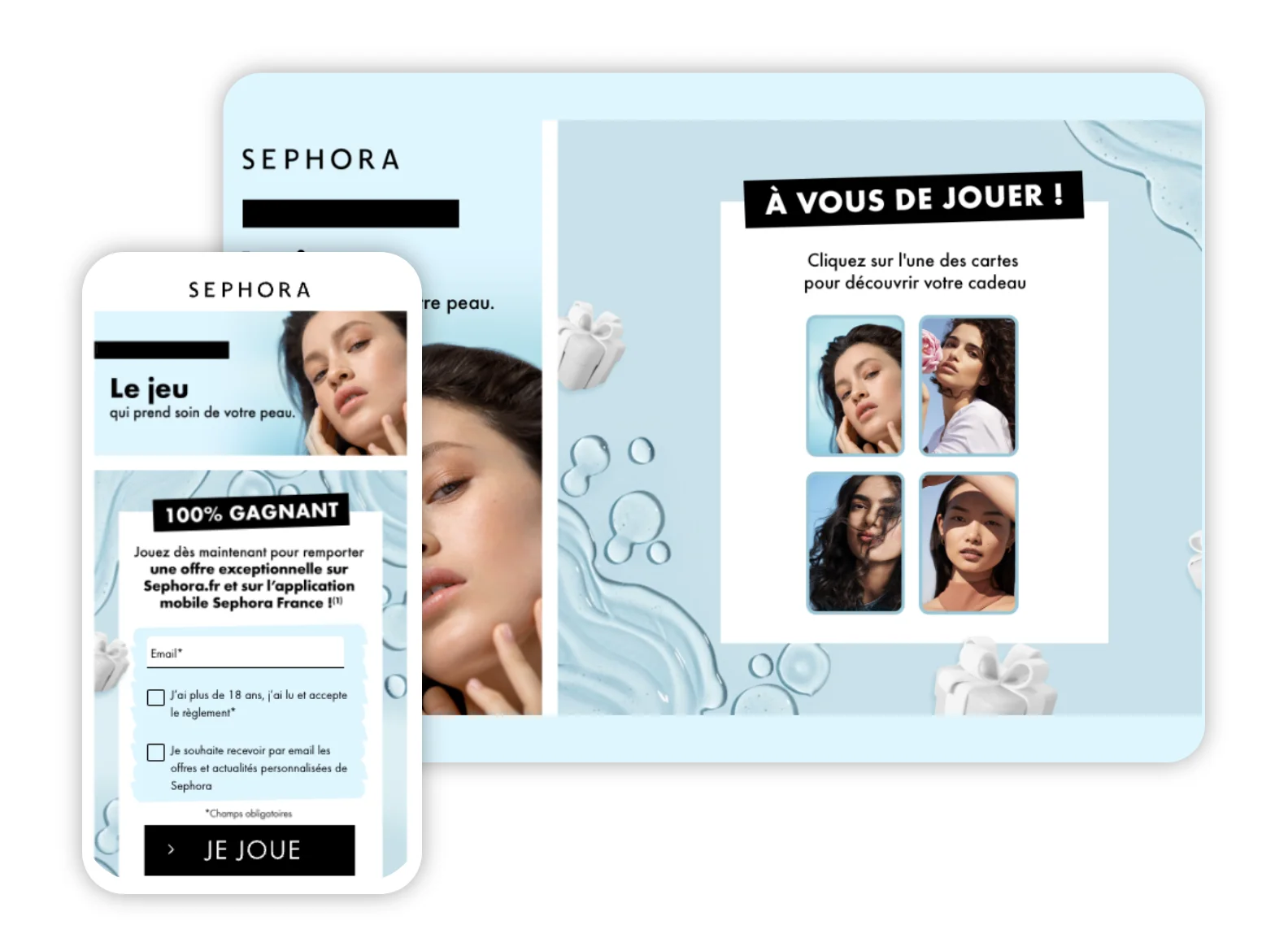
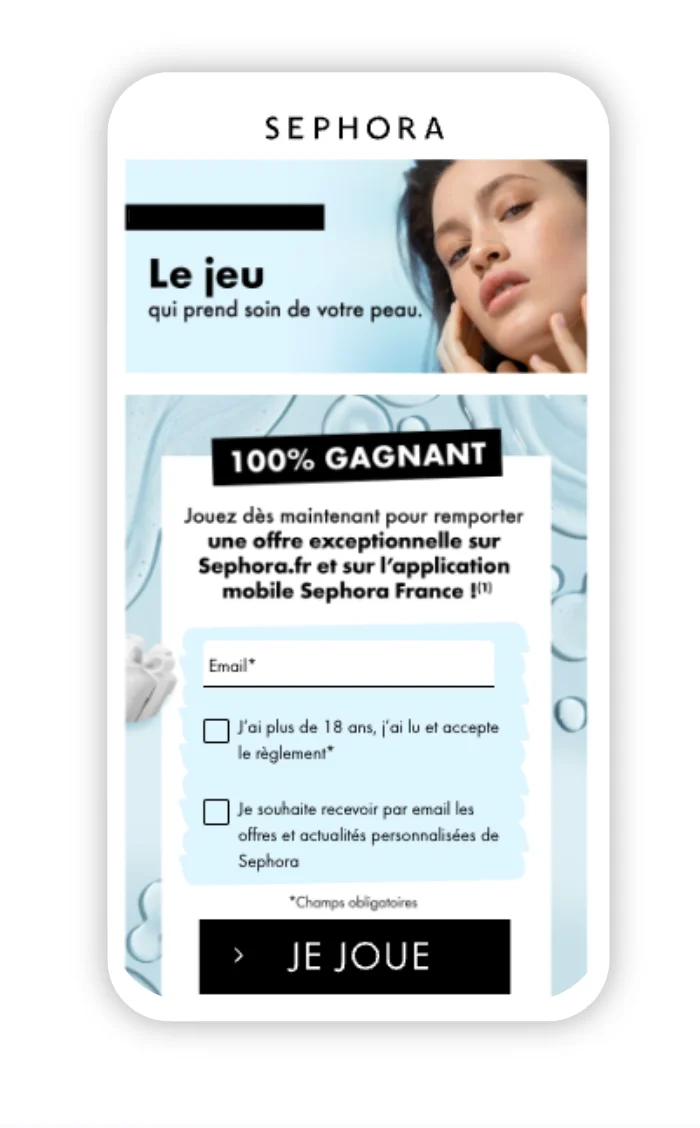
Engage and retain customers through cosmetics marketing
In a marketing as competitive as beauty, customer engagement is not just about the moment of purchase. It is over time that a cosmetics brand builds a strong relationship with its community. Here are three hey approaches to cosmetics marketing for effectively and sustainably engaging your community.
1. Immersive online and point-of-sale campaigns
Creating a link between digital and physical channels allows you to re-engage consumers in an omnichannel approach. A well-designed immersive campaign can encourage people to visit a store, try something new or complete an online purchase. By adding exclusive gifts or content, the customer experience becomes even more engaging.
Cosmetics brands can therefore:
- Offer mini-games accessible on mobile devices with rewards to be collected in-store
- Create a gamified discovery tail to showcase a new range or limited edition,
- Focus on short but dynamic campaigns to generate a spike in traffic over a few days.
Example: Sephora summer campaign
For six days, Sephora rolled out a gamified mobile activation to boost its summer sales. The experience, accessible via the app, offered participants the chance to win in-store discount vouchers. This 100% win-win format not only stimulated purchases, but also enabled the recruitment of qualifed opt-in leads, while strenghtening the use of the Sephora app as a loyalty channel.
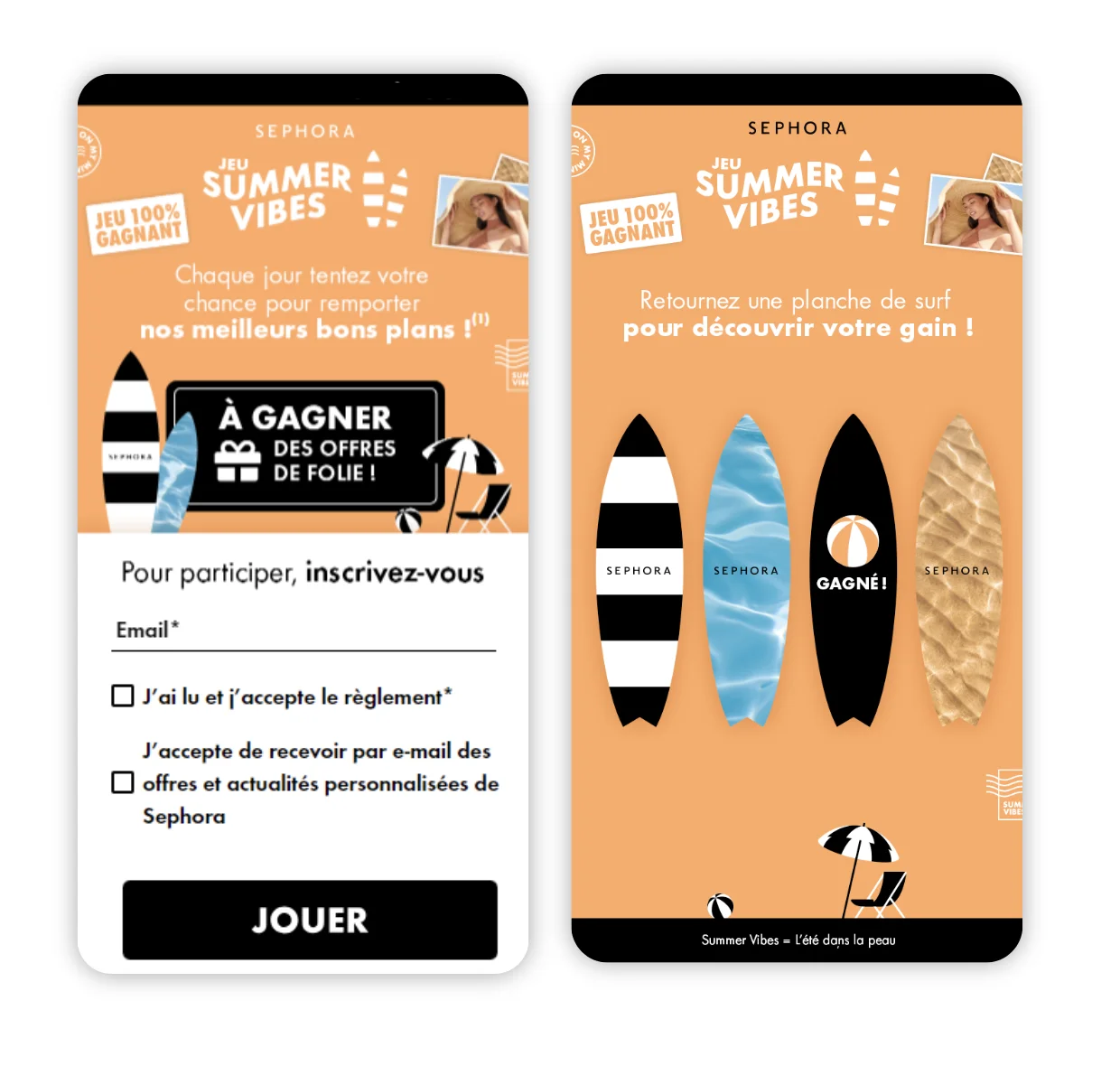
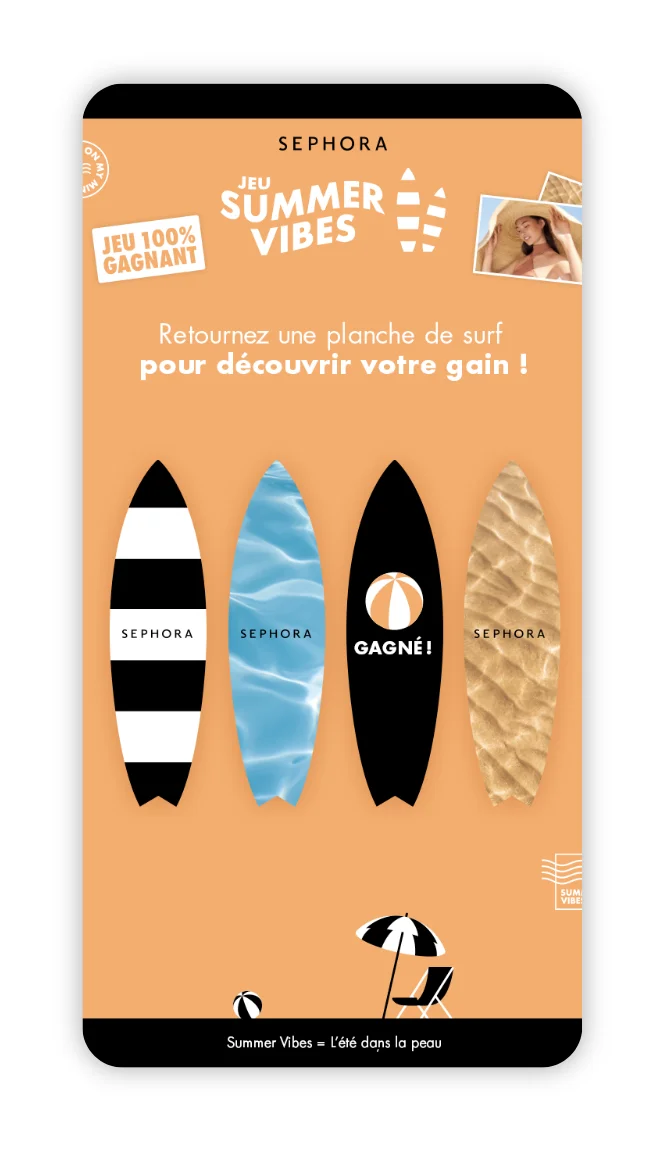
2. Ambassadors program to activate the community
Example : Typology
French brand Typology has set up a program of micro-influencers and ambassadors among its loyal customers. These profiles are invited to test products in advance, give their opinions and share their experiences on social media. This engagement strategy is based on proximity, authenticity and recommendations, which strengthens the brand’s credibility and promotes high-quality UGC.
3. Interactive loyalty programs
Traditional loyalty programs are often uninspiring. By incorporating interactive mechanics, we transform loyalty into a truly fun experience. The resulte: increased engagement, better retention and active promotion of customer loyalty.
Example: Galeries Lafayette uses gamification to encourage customers in its program to make repeat purchases from the retailer. Members of the loyalty program must enter a code received after purchase (by email) to access an exclusive game and try to win gift vouchers.


Conclusion
In a sector as dynamic as cosmetics marketing, standing out requires a strong brand, engaging campaigns and lasting customer relationships. Gamification is emerging as a powerful lever for boosting visibility and sales. To take things further, discover the interactive activations in the Adictiz catalogue and transform your beauty campaigns.


